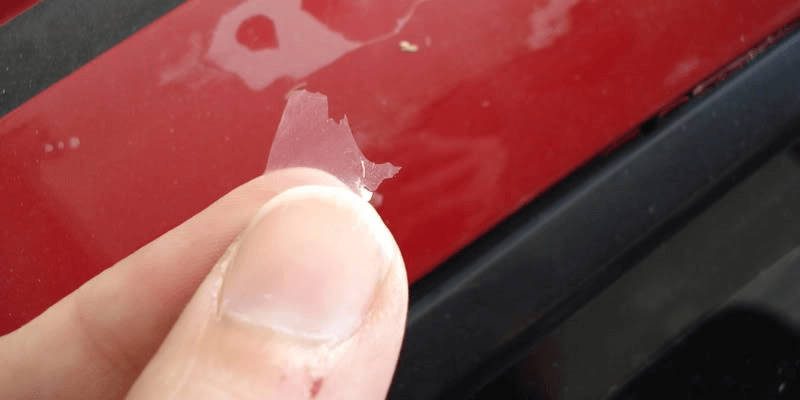
How to Fix Your Vehicle’s Clear Coat
Achieving a car’s higher resale value has a lot to do with its outlook and functionality. Clearcoat will help you achieve the desired cosmetic outlook and proper care and maintenance will fulfill the buyer’s intended functionality.

Clear coat, therefore, is a transparent layer of paint that is applied on a vehicle to cover and enhance the colored coat. It is the last coat applied to a panel, and its thickness varies with regard to manufacturers. You might be wondering whether it’s necessary to apply clear coat to your car. Well, it is not a must that you apply clear coat to your car, but it does have some benefits such as durability and increased color depth.
Glossy clear coat is known to lose its sheen over time due to exposure to the elements, and leaving your car out in the open will also cause the paint to oxidize, thus making the surface look dull and faded. In addition, your car might develop dulling and hazing occurs if your undercoat doesn’t dry properly before applying the finishing touches.
We will, therefore, explore the mentioned issues and how you can best solve them. But first, let’s take a look at some of the mistakes to avoid when applying your clear coat.
Avoiding Common Mistakes
The best way to ensure that your clear coat exhibits the finish you’re looking for is by approaching the painting process with the relevant application knowledge. This is because; there are some common errors that can be made during this procedure that would lead to such issues. If you’re aware of these potential errors, then you’re more likely to work towards getting excellent results from the first try.
Cloudy clear coat
You might be wondering why your clear coat is cloudy or why the car’s clear coat is turning white, well the problem here is humidity and it might be in your best interest to avoid humid areas as well as ensure there is no moisture in the air supply line.
In other cases, the film thickness may be inadequate when applied too thinly, but remember that excessive thickness is also another potential problem that you can face when looking for a glossy finish. You have to ensure that the amount of clear coat applied is just right.
Don’t rush through
Rushing through the job is another way to achieve unwanted results. Every layer of paint should be given an appropriate amount of time to flash between stages. Adding on new layers before the previous covering has fully cured could lead to a variety of bad results. It’s important to wait the appropriate time allotted before painting over the undercoat.
Use good quality coat
Using the wrong reducer during mixing can cause the solvents to evaporate at a faster pace. Applying a clear coat of poor quality is also something that leads to bad results. You may be tempted to save a few bucks by buying the cheapest option in the market – but this will only end up with you paying extra to fix any problems that arise. If you have no experience with painting cars, then getting a professional to handle the task is your best chance of success.
How to Remove Haze from Clearcoat
If it’s too late to avoid any of the mistakes mentioned above, then you will have to fix the issue that has developed outright. One of the more common problems faced when applying a clear coat is hazing. You can fix the area affected by this outcome through a few simple steps as stated below.
Rubbing it out
If only a small area of your car’s clear coat is turning white, the issue can be solved by sanding down the region. Blushing is usually a result of moisture being trapped under the surface. Releasing this moisture is the most straightforward way of taking care of the problem. Simply get some 4/0 steel wool and rub out the section that has been affected. You should take care not to exert a lot of force, however, as this could end up damaging the vehicle’s paint.
If the blush is located in a deeper region of the vehicle, then you will need a de-blush solution to elicit a more effective result. The solution is made up of a number of solvents that work together to re-melt the clear coat finish, allowing moisture to escape as well as level out any small defects that might have developed. This mainly works when the region involved consists of a small surface area.
Paint Restoration
If the region involved is larger in proportion, then you might have to remove the entire clear coat that has been applied. You accomplish this yourself if you have prior experience with painting your car. You will first need to wash the area involved with a sponge and some soapy water. Use this to clean the area before rinsing out the soap with a hose. Once this is done, wipe the section dry using a microfiber cloth. It’s essential to ensure that the area is completely dry before moving on to the next step.
Once the area is dry, the next step involves blocking the section to be worked on. You can do this with masking tape that should be applied across the border of the region concerned. The tape should be placed about 13 to 15cm past the area to be sanded. You can also use the tape to cover the gaps between the car’s panels so as to protect the other sections of the vehicle.
The third step involves sanding the area that has been cordoned off. This can be achieved using a non-woven, fine grit scratchpad. The extra space (i.e., the 13 to 15cm area earlier mentioned) that has been included in your region will act as the blending section. You should strive to remove as much of the old clear coat as possible, taking care to include the edges and corners of the area involved. Upon completion, the sanded area should show a dull but smooth surface.
Once the area has been adequately sanded, use a soft wet sponge to wipe the region and remove any dust and debris that accumulated during the process. Afterward, dry the section using your microfiber cloth. Next, cover the windows and other parts of your car with old newspapers to prevent the clear coat from reaching these areas when applied.
Once the car is ready for its new coat, park the vehicle in a well-ventilated area, preferably with a roof – such as a garage. It’s important to ensure that you’re not working in a closed-off room due to the health dangers posed. Hold the aerosol can about eight inches from the region when you start spraying. Starting from one end, spray the coat in an even direction going towards the other end.
Apply three even coats to the section, making sure to let each layer dry before applying the next one. Drying time should take about ten minutes between each coat. Once the final layer is dry, wait for approximately two to three hours before removing the masking tape.
How to determine the cost of fixing a clear coat
The first determinant of the cash that you are going to spend to have your clear coat fixed is the size or area of delamination. If you will only need one panel fixed then you are bound to save some money.
Sometimes you might need to repaint the whole car when it has peeled off completely; however, the above rarely happens unless of course the paint used was defective. Also, multiple clusters of spots on several different panels might have your whole vehicle re-done.
Constant application of clear coat will after some time affect your base coat, and in such a case you will have to fork out some good cash because the restoration process could be quite complex, the reason being that you will need to sand a greater surface area and carry out a complicated paint-matching process.
What’s more, is that some car coats are peeled because of dents from being hit, so if you will want a professional job done then you will have to wait for the dent to be repaired before, the clear coat is re-sprayed.
Questions
How much is too much when applying clear coat?
You should never apply over three coats of urethane clear in a single application, without giving it time to cure color sanding or to re-clear. Because if you apply excessive coats of urethane clear wet on wet then it will result in delimitation, splitting, and the development of the soft film.
Can clear coat be removed with a car polish?
Yes, car polish is an abrasive product that you can use to remove clear coat. Scratches can also be easily removed using car polish. However, don’t be deceived that car polish can be used to protect your paint instead use wax. Waxing will protect the paint and the clear coat by preserving the oils in the paint that also helps to prevent oxidation.
How long should I wait until my clear coat is completely dried up?
24 to 48 hours is the recommended curing time, finding an exact answer to this question might be tricky because it also depends on the products that you have used and the layers applied.
What is the cause of a non-glossy clear coat?
The first cause of a non-glossy clear coat is the application of too thin per coat or using the nozzle at a far distance.
Conclusion
Fixing a clear coat can be a DIY process but then again it depends on the severity of the situation. There are some damages that need professional care, especially those that involve a large portion or if the damage is deeper and not just on the surface. The extent will also determine the amount that you are going to pay, and if you decide to cater to the small issues from your home garage then ensure to use good quality paints.
